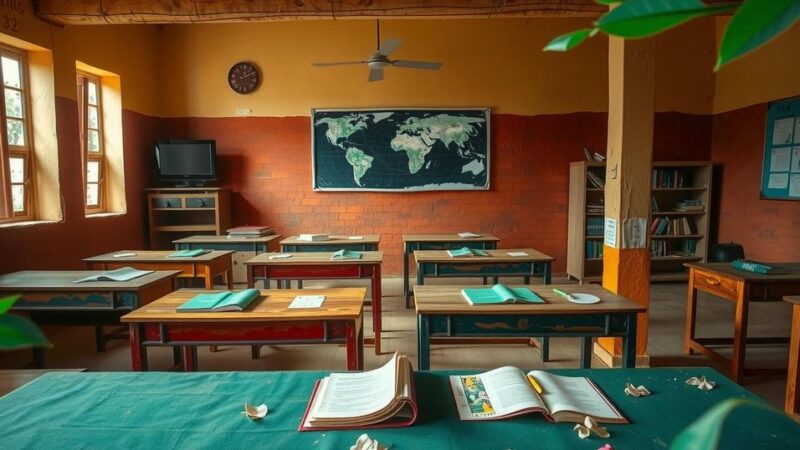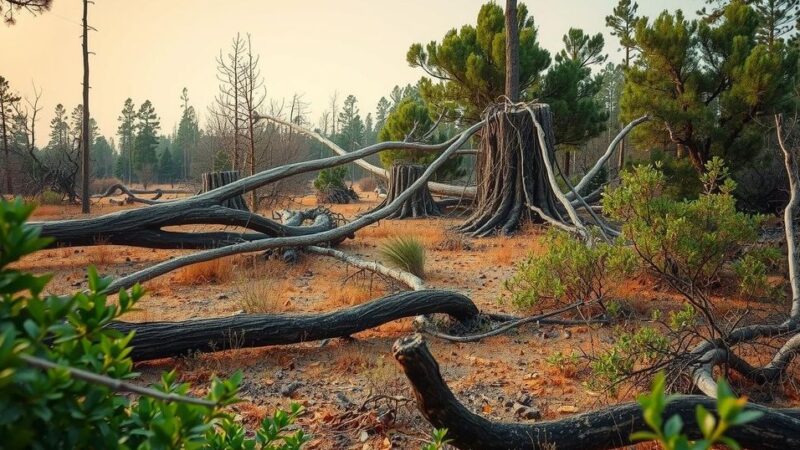The village of Tipuani in Bolivia is experiencing severe flooding that has submerged approximately 500 homes, primarily due to practices associated with gold mining and the impacts of climate change. Experts highlight the detrimental effects of mining on riverbanks and the environment, while local residents struggle to cope with displacement and loss. The combination of extreme weather patterns poses significant challenges for the community’s future.
In the village of Tipuani, Bolivia, approximately 500 homes are partially submerged due to flooding attributed to intensified gold mining and climate change. Rafael Quispe, a local miner, navigated through his waterlogged village on makeshift rafts, observing the transformation of his once picturesque community into a disaster zone. Experts attribute the increased flood risk to a combination of gold mining eroding riverbanks and abnormal rainfall patterns linked to climate change.
Tipuani, with a population of 7,500 predominantly engaged in mining, has faced repeated flooding during the rainy season, which occurs from November to April. Residents rely heavily on mining, yet the practice contributes to the ongoing erosion and alterations in river flow. Alfredo Zaconeta, a researcher, emphasizes that the extraction of gold involves removing critical land and directly dumping waste into the river, thus exacerbating the flooding problem.
Former miner Sinforiano Checa and others in the community lament the adverse effects of mining practices. Checa, who has been living in a tent since his home was inundated, considers the actions of mining companies profoundly detrimental. Rolando Vargas, president of one of the local mining cooperatives, acknowledges a shared sense of responsibility for the environmental decline and community suffering. Tragically, Vargas was later reported missing after his truck was swept away by the river.
In nearby Chima, children continue to play in contaminated waters, and many families are struggling to find a way to sustain themselves amid the devastation. Manuel Barahona, a local resident, reflects on the harsh reality that they must continue working despite the risks associated with such a perilous environment. The broader implications of climate change further complicate the situation, as Bolivia remains among the most vulnerable nations globally, facing increasing floods and droughts.
The severity of recent rainfall has surprised meteorologists, being the highest recorded for January since 2012, raising alarms about the effects of climate change on local weather patterns. Lucia Walper from Bolivia’s meteorological service describes the recent anomalies in weather as completely out of sync with the La Nina phenomenon, which typically brings drier conditions. The impact of climate change has also reduced the natural vegetation that retains moisture, further altering rainfall dynamics across the region.
The plight of Tipuani exemplifies the devastating intersection of gold mining activities and climate change, leading to severe flooding and community displacement. As mining practices continue to threaten the environment, the residents face a dire future amid natural disasters intensified by climate factors. The community’s reliance on mining underscores a complex dilemma where the very means of livelihood also endangers their existence, necessitating urgent advocacy for sustainable practices and environmental reforms.
Original Source: www.france24.com






